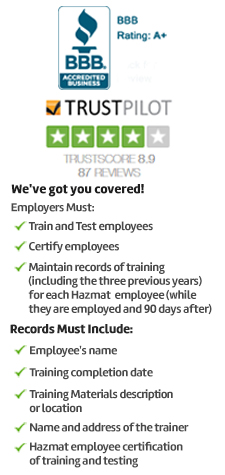
Cal/OSHA Training Certification

This online safety course deals with health impacts of lead exposure by workers in workplaces and provides a detailed analysis of California Occupational Safety and Health (Cal/OSHA) regulations for lead exposure which includes modes of exposure, health implications on body, and administrative, engineering and workplace control measures to reduce the hazard.
Governing regulations
The U.S. Occupational Safety and Health Administration (OSHA) has brought in general industry lead regulations in 1978. However, case studies had shown that workers especially belong to construction industry, were still being affected by lead exposure related ailments. To protect construction workers from lead exposure, OSHA in 1993, had passed stringent rules. Several states, including California, followed suit by having their own OSHA-approved regulations to contain lead exposure at workplaces. Commonly referred as “Cal/OSHA,” this regulation in California is governed by the California Department of Industrial Relations through the Division of Occupational Safety and Health (DOSH). Cal/OSHA regulations are applicable to all State government, private sector workplaces, and local government bodies. The Cal/OSHA lead regulations for the construction industry can be referred at the California Code of Regulations, Title 8, 1532.1, or “8 CCR 1532.1”. This online course is restricted to only Cal/OSHA regulations for lead exposure.
Course Overview
This internationally acclaimed course has been formulated to help industry workers to understand the risks pertaining to over exposure of lead at workplace and comprehend the safety measures that employers and workers should support and follow to reduce the health impact of lead exposure. The course also deals with the responsibility of construction workers to comply with regulations and safety standards, modes of exposure, hazard management, how to deal with lead exposure and follow up procedures, symptoms and possible health implications due to long exposure of lead, training procedures and protective measures. Learners will also get an overview of existing safety regulations and standard practices and need of such legislations.
Who Must Take this Course?
The work environments at construction sites have full of health hazards and it is the responsibility of the employers to provide safe and congenial atmosphere to workers. So, workers who are exposed to dangerous substances such as lead should join this course to get a thorough understanding on the health impacts due to intake of lead through air or any other medium. Lead exposure can cause damage to brain, nerves, kidneys and reproductive system apart from disturbing the metabolic system. Construction workers involved in demolishing, sanding, painting or renovation of buildings can be exposed to dust which contain impurities such as lead components. These people should be trained to follow the rules and regulations to protect themselves. Employers must ensure that workers who are vulnerable to lead exposure should be trained and adequately protected to prevent overexposure.
Course Format
Our Cal/OSHA Construction Lead Exposure Training course contains well-researched content for anyone to understand and practice, interesting graphical representations, audio presentations and good number of vital questions for better training before the final exam.
Continuing education credits?
Each student will receive 0.2 CEUs (or 2 CMEs) for completing this course.
Topics Covered
- About This Course
- Course Objectives
- Introduction to Lead Exposure in Construction
- Key Terms
- High-risk Jobs
- Modes of Exposure
- Applicable Regulations
- Lead Exposure
- Symptoms of Short-term Exposure
- Symptoms of Long-term Exposure
- Health Effects of Short-term Lead Poisoning
- Health Effects of Long-term Lead Poisoning
- Pregnant Women, Babies, and Children
- Lead Levels
- Employer Responsibilities
- Initial Exposure Assessment
- Initial Exposure Assessment Exceptions
- Protection During the Initial Assessment
- Compliance Program
- Engineering Controls
- Personal Protective Clothing and Equipment
- Hygiene Provisions
- Regulated Areas
- Training
- Recordkeeping
- Preventative Measures and Best Practices
- Housekeeping
- Hygiene
- Work Practices
- Respirators
- Facial Attachments-Tight-Fitting Coverings
- Facial Attachments-Loose-Fitting Coverings
- Air-Purifying Respirators
- Powered Air-Purifying Respirators
- Supplied-Air Respirators
- Self-Contained Breathing Apparatus
- Fit Testing
- Medical Surveillance and Removal
- Initial Medical Surveillance
- Blood Tests
- Full Medical Surveillance
- Chelation
- Medical Removal
- Summary
- Additional Resources
- Exam

 NEBOSH CERTIFICATE
NEBOSH CERTIFICATE NEBOSH DIPLOMA
NEBOSH DIPLOMA IOSH
IOSH SAFETY DIPLOMA
SAFETY DIPLOMA CPD UK
CPD UK ROSPA UK
ROSPA UK FOOD SAFETY
FOOD SAFETY 



